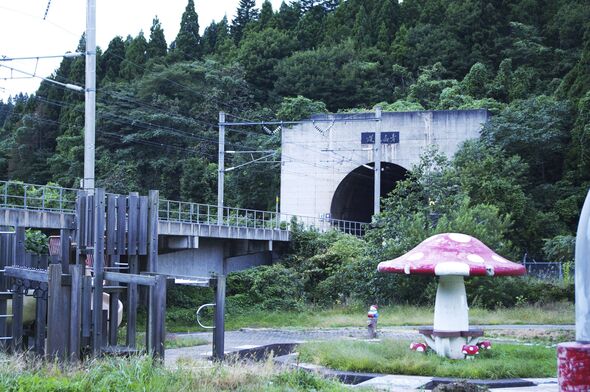If asked which underwater tunnel in the world was longest, you’d be pardoned for proposing the Channel Tunnel, located between the UK and France, which is an admirable 31 miles long.
But, Japan’s Seikan Tunnel puts the iconic Channel to shame. Despite opening six years earlier in 1988, this railway tunnel in Asia is an astounding 3,000 meters longer than its British-French counterpart, spanning 33.4 miles, of which 14.3 km are beneath the Tsugaru Strait’s seafloor.
Alongside being the longest tunnel, it is also the deepest railway line in the world, reaching depths of up to 140 meters below sea level.
The severe underwater conditions, frequent earthquakes, and the requirement to maintain the tunnel’s structural integrity under high water pressure were just a few of the many difficulties encountered during construction.
Engineers used the latest technologies to cut through solid rock and the seafloor, including highly advanced rock-boring equipment.
The tunnel cost approximately £5.6 billion to construct and links Japan to its northern islands, specifically the Islands of Honshu and Hokkaido. Maintenance doesn’t come by cheap either, racking up a hefty $286 million since 1999.
Seikan planning was only brought up after World War Two, when Japan had to relocate a large number of returning citizens after its overseas territories were reduced. They once controlled a large portion of present-day China and the majority of present-day Vietnam.
Prior to the tunnel, ferries served as the main mode of transit over the Tsugaru Strait, but they were frequently delayed by inclement weather and choppy seas.
By significantly cutting down on travel time and increasing dependability, the tunnel has strengthened tourism and economic relations between the islands.
Tourists from all over the world come to Hokkaido because of its breathtaking scenery, energetic cities, and rich cultural legacy.
Travellers wishing to explore Hokkaido’s natural wonders, including its well-known lavender fields, hot springs, and ski resorts, may do so directly and effectively thanks to the tunnel.
The Seikan Tunnel remains an essential part of Japan’s transport system as the country makes further investments in its infrastructure.
High-speed rail service extension is one of the plans in the works to further improve the tunnel’s capabilities.
By undertaking these improvements, the tunnel will be able to handle growing passenger and freight needs for many years to come.
